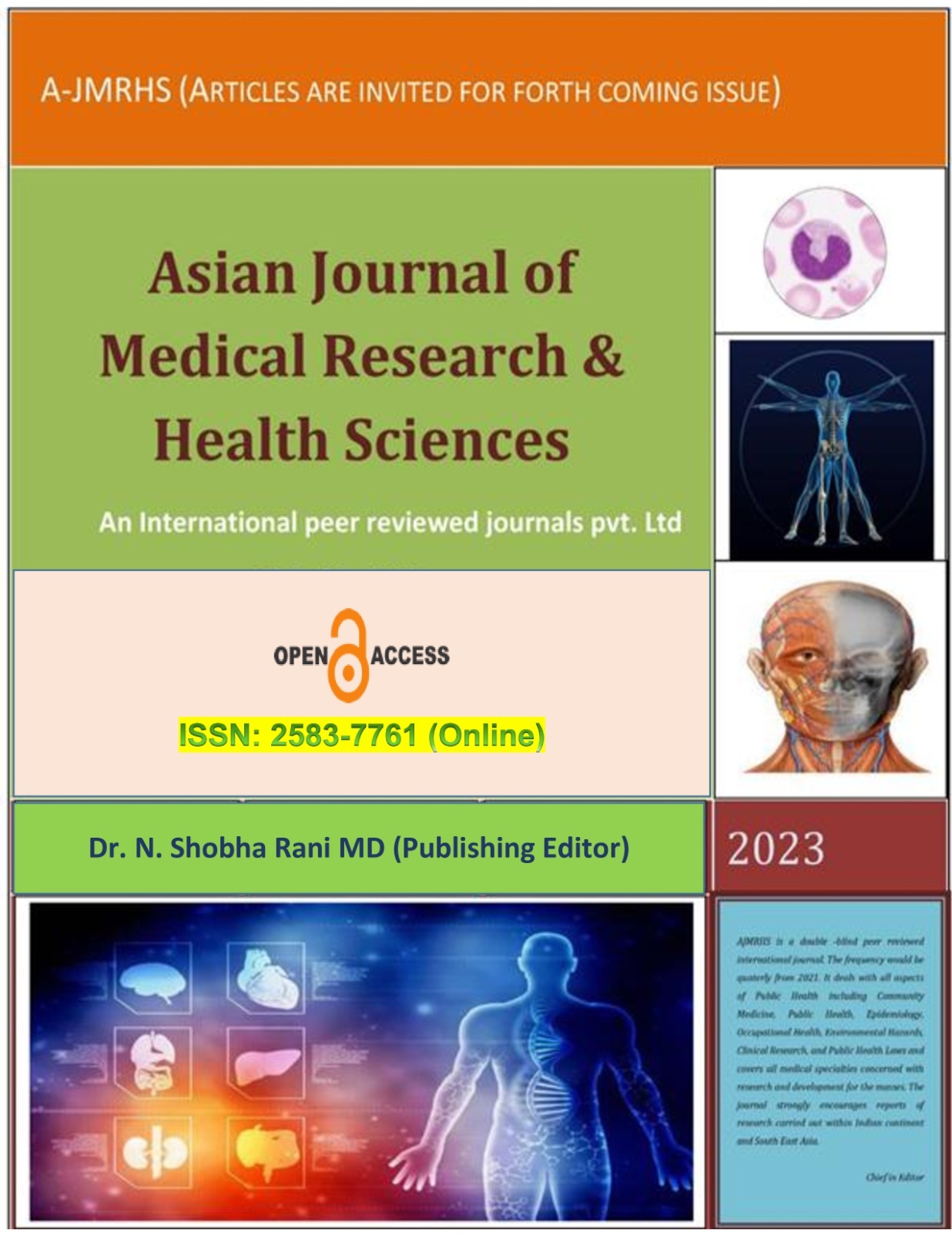ACUTE A RARE CASE OF ABDOMINAL HYDATIDOSIS
Abstract
Hydatid disease (HD)—also called hydatidosis, echinococcal disease or echinococcosis is a zoonosis caused by tapeworms of the genus Echinococcus. The disease is usually acquired when contaminated water or food that contains the parasitic larvae of echinococci is ingested. CT and MRI are ways to define better cyst calcifications; they are crucial for determining lesion viability and in turn, selecting the appropriate treatment. CT and MR imaging have important roles in the evaluation of extra-hepatic HD, as they enable better assessment of the extent of larger lesions and aid in establishing the relationships of the cyst with surrounding strctures. A 35 years old female patient was admitted with a history of abdomen distension of 6 months and abdomen pain of 2 weeks at Shridevi Institute of Medical Sciences and Research Hospital, Tumkur. To evaluate for the symptoms, USG was done followed by CT and MR which showed multiple large well defined cystic lesion with multiple thin septae, calcifications, debris with pelvic extension.Hydatid disease primarily affects the liver and typically demonstrates well-known, characteristic imaging findings. Hepatic hydatidosis are common but is rare to see all type of hydatidosis and with all stages at same time.
Downloads
Published
Issue
Section
License
Copyright (c) 2023 Satender Singh, Divya. J (Author)

This work is licensed under a Creative Commons Attribution-NonCommercial-ShareAlike 4.0 International License.




